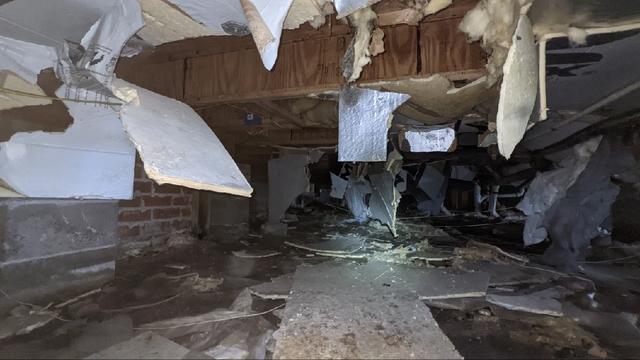
Messy Wet Crawl Space
The mess of insulation was caused by high humidity putting water weight on the insulative material, causing it to break apart and fall.
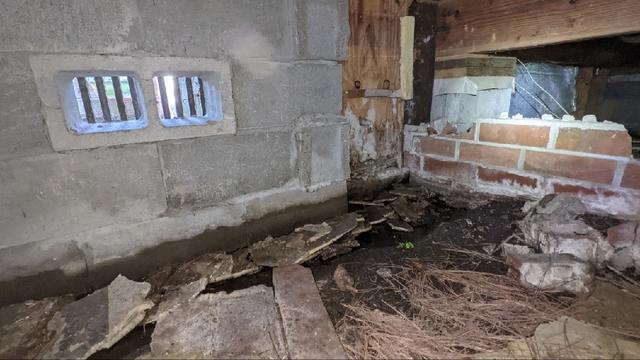
Signs of Water Flooding in
On the exterior walls of the crawl space there are water stains indicating prior flooding in the crawl space.
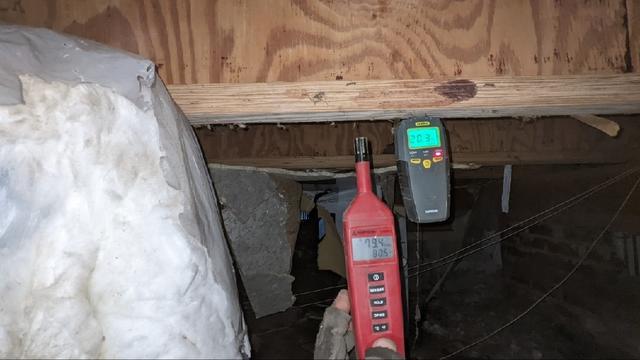
Humidity and Wood Moisture Readings
Both humidity and wood moisture readings were high, creating an environment that breeds mold and weakens the integrity of the wood framing supporting the floor.
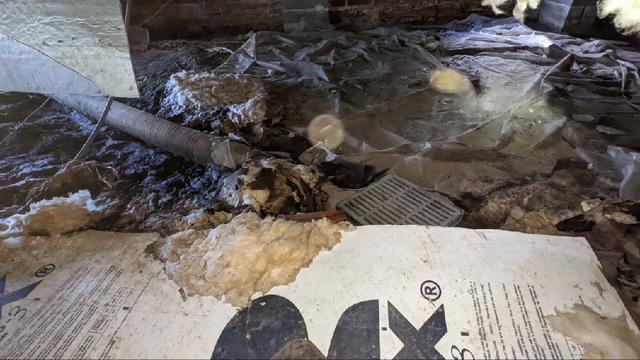
Drainage Leading into the Crawl Space
A big warning sign our inspector found in this crawl space was that the exterior drainage system of the home was leading directly into the crawl space. Water should never be drained directly into the crawl space.
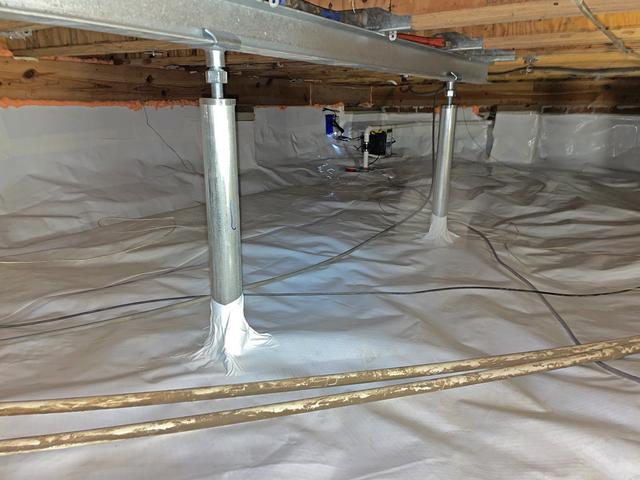
Final Result!
The crawl space was encapsulated to seal out moisture and remove groundwater as it seeps in. SmartJacks were used to support the floor in weakened or insufficiently supported areas.
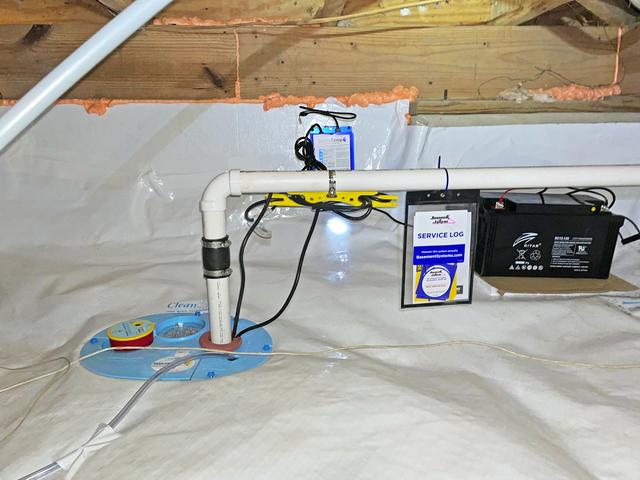
Crawl Space Sump Pump
With the installation of a SmartSump, groundwater that seeps into the crawl space through the walls can be pumped out to drain away from the home. In the event of a plumbing leak or extensive flooding, an alarm on the sump pump will indicate water is inside the encapsulated space.
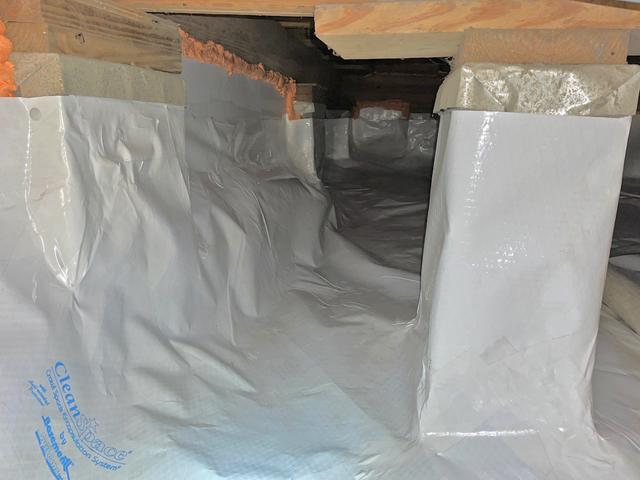
Foamax Insulative Wall Barrier
Since moisture ruins subfloor insulation, the vapor barrier already has an insulative value to it, the walls of the crawl space were additionally insulated with Foamax wall barrier rather than insulating the subfloor. This can help greatly reduce home energy costs.
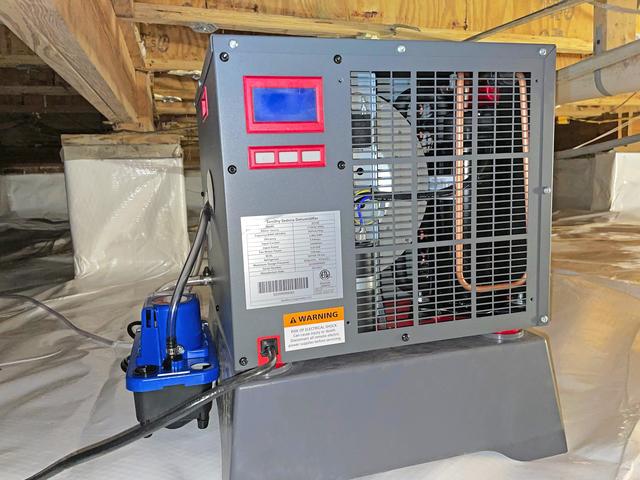
SaniDry Sedona Dehumidification
A SaniDry Sedona crawl space dehumidifier was installed to monitor and control the humidity level, pumping water out of the air and draining it into the sump pump.
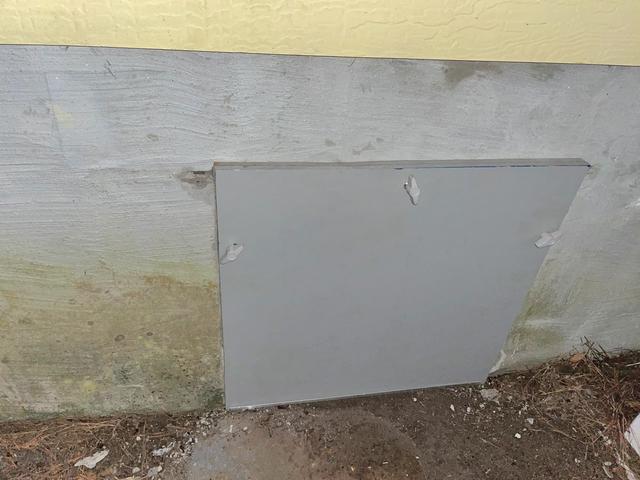
Sealed Crawl Space Door
To finish off a great encapsulated crawl space, the door is replaced with a sealed EverLast door to keep out moisture.



.png)

